
Updated at 3:25 p.m. BJT, Wednesday
The death toll has risen to 56 while 14 people remain missing after tropical storm Lekima made landfall in east China's Zhejiang Province on August 10.
Lekima has been downgraded from a super typhoon to a tropical storm over the last few days. It is estimated to have caused economic losses of over 51 billion yuan, local media reported on Wednesday.
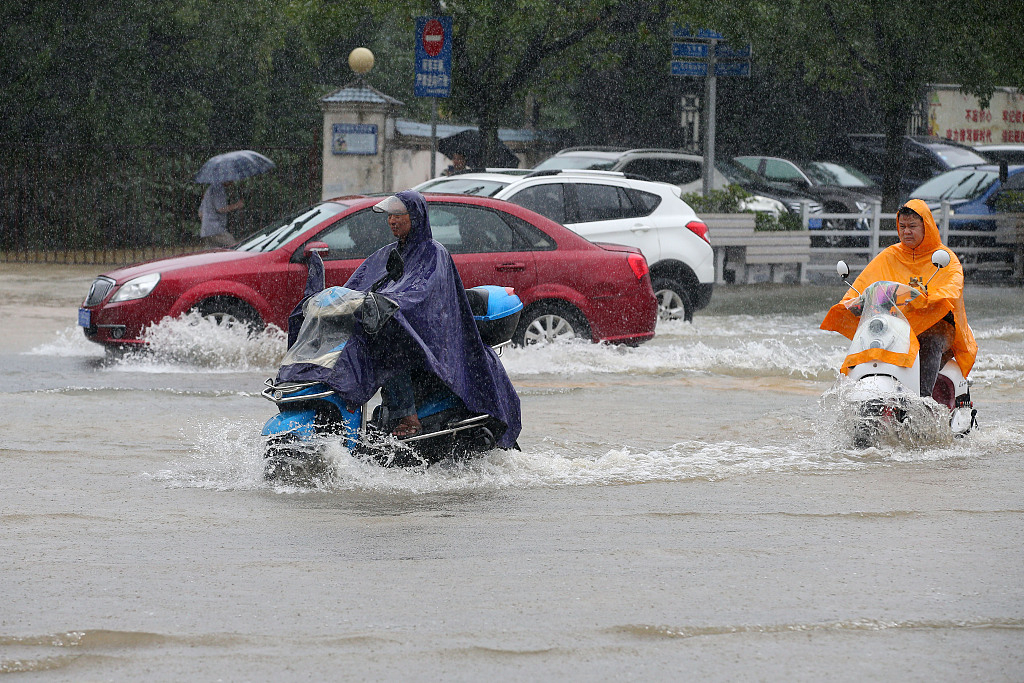
Updated at 8:50 p.m. BJT, Monday
At least four more people were killed, and five went missing after the super typhoon Lekima passed through east China's Anhui Province on Monday, packing strong winds and heavy downpours.
More than two million people were immediately transferred and taken to safety by the local government. The rescue and relief work is underway.
The death toll caused by the Lekima has now risen to 48. The super typhoon killed 39 people and left nine others missing after it battered eastern Zhejiang Province.
At least five other people died, and seven went missing after Lekima made a second landing in Qingdao City, east China's Shandong Province at around 8:50 p.m. BJT (1350 GMT) on Sunday.

Floods hit Weifang City in east China's Shandong Province on August 11, 2019./ VCG Photo
Updated at 11:00 a.m. BJT, Monday
As of Monday morning, super typhoon Lekima has left 39 people dead and nine people unaccounted for in east China's Zhejiang Province, according to local authorities.
In east China's Shandong Province, Lekima has left five people dead and seven missing after making landfall its coastal areas.
Lekima has been downgraded to a tropical storm since making a second landfall by China's National Meteorological Center.
The rescue and relief work is underway.
More: Typhoon Lekima kills 5 after second landfall in east China's Shandong
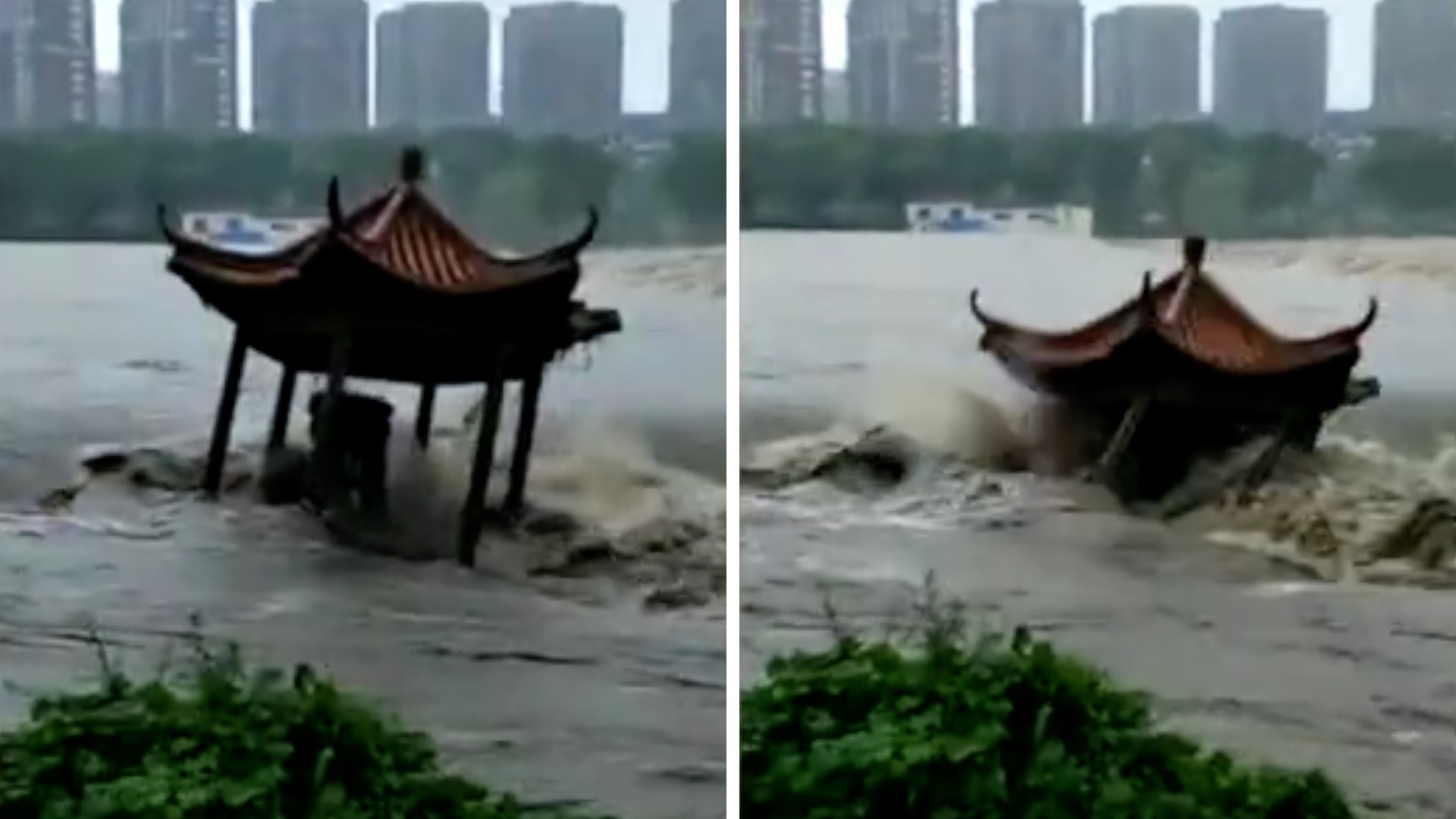
Updated at 9:20 p.m. BJT, Sunday
Lekima has so far claimed 32 lives in east China's Zhejiang Province. This is the ninth typhoon of the year to hit the country, and it is predicted to be one of the strongest to hit east China in years.

Lekima packed strong winds along coasts in E China’s Qingdao City, Shandong Province on August 11, 2019./ VCG photo
As of 5:00 p.m. Sunday, the super typhoon left 6.51 million people impacted in the provinces of Zhejiang, Jiangsu, Anhui, Shandong and Fujian as well as the city of Shanghai, according to the Ministry of Emergency Management.
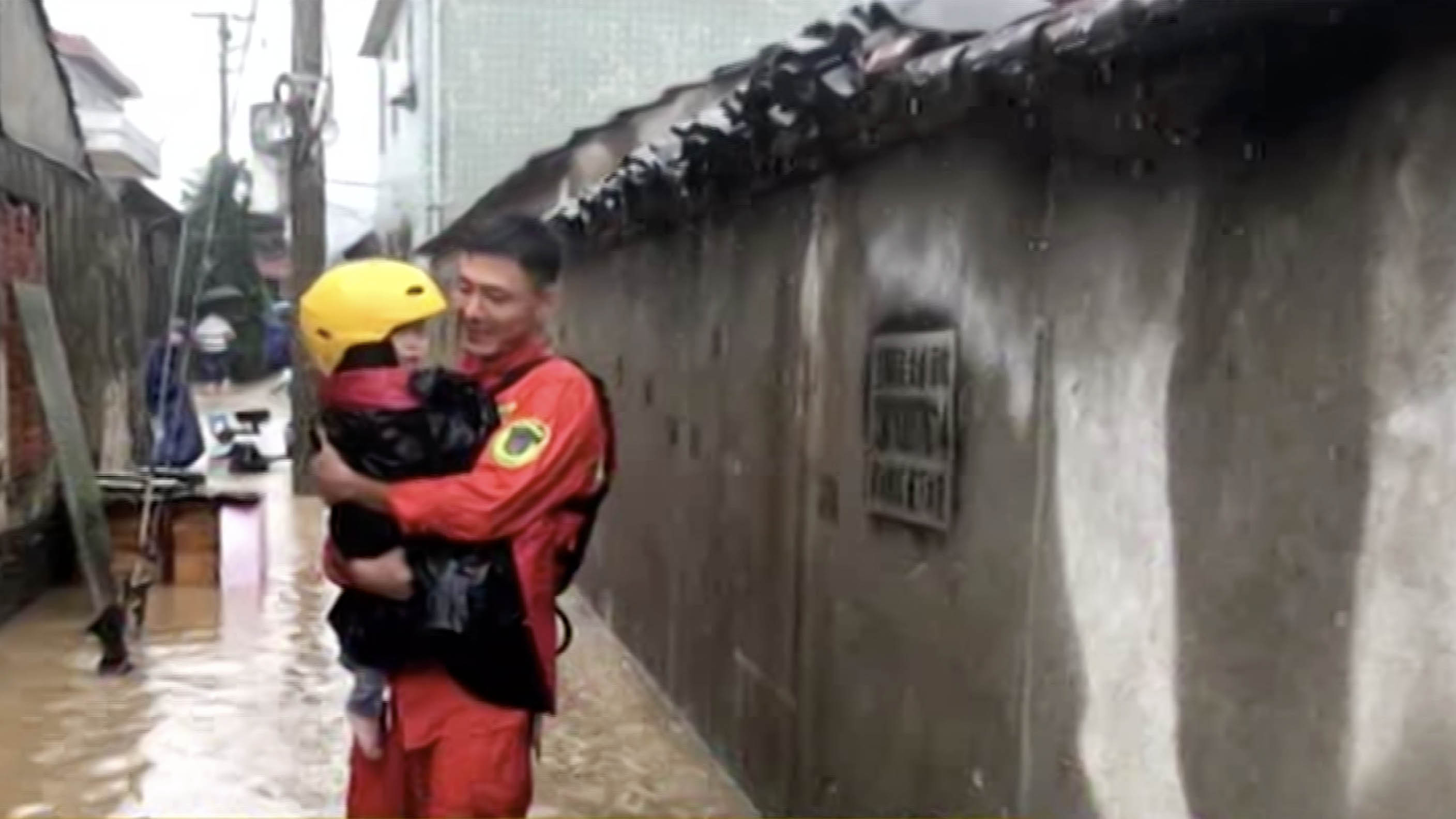
Updated at 3:10 p.m. BJT, Sunday
Super typhoon Lekima has left 32 people dead and 16 people unaccounted for in east China's Zhejiang Province, local authorities confirmed.
Search and rescue operations are underway in the region.
As the typhoon is moving north, strong winds have slammed northeastern China's Liaoning Province. All operations at the port of Dalian have been suspended.
Updated at 2:10 p.m. BJT, Sunday
As of noon BJT on Sunday, at least 30 people were confirmed dead, and 18 others are still missing after Typhoon Lekima made landfall in eastern China's Zhejiang Province.
More than 5.35 million people and over 180,000 hectares of crops were affected by Typhoon Lekima, local authorities said, adding that Lekima caused a direct economic loss of around 2.23 billion U.S. dollars.
Updated at 8:45 a.m. BJT, Sunday
The death toll has risen to 28 while 20 others remain missing after Typhoon Lekima made landfall in east China's Zhejiang Province on Saturday.
The search and rescue operations are underway, local media reported.
The Chinese Ministry of Finance and the Ministry of Emergency Management on Saturday quickly allocated 30 million yuan to support Zhejiang Province for disaster relief, according to reports.
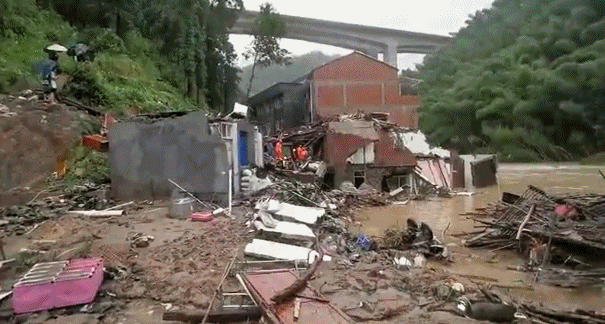
Landslide hit Shanzao village in Yongjia County in east China's Zhejiang Province./ Animation: Fire and rescue brigade of Yongjia County
10:20 p.m. BJT, Saturday
Typhoon Lekima has killed at least 22 people in east China's Zhejiang Province, with 10 others missing as of 8:00 p.m. on Saturday, local authorities said.
The super typhoon made landfall near the city of Wenling in Zhejiang at around 1:45 a.m. BJT on Saturday, with wind speeds reaching 52 meters per second at its center, according to China's National Meteorological Center.
It is expected to move at about 15 km per hour northward and westward with abatement of wind and reach Jiangsu Province on Saturday night.
Read more:
Typhoon Lekima makes landfall in eastern China
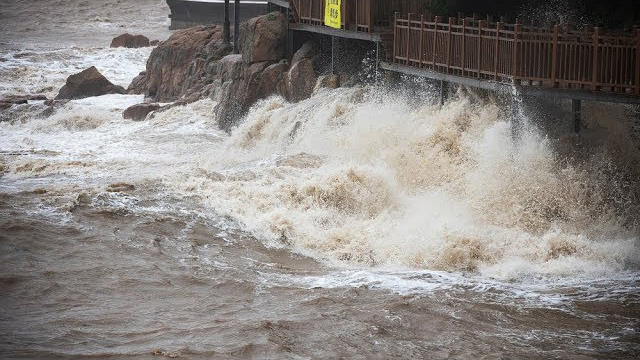
Short of time to evacuate
Some people were killed, and others went missing when a typhoon triggered landslide swept through a village in Yongjia County in Wenzhou City of Zhejiang Province, a local official said.
"Torrential rain caused a landslide on a mountain that blocked a river below, trapping around 120 people in the village."
A sudden burst happened at a barrier lake formed after the landslide, with the floodwater sweeping the downstream area.
Officials said villagers didn't have enough time to evacuate to safety, as the water level rose too fast, reaching up to 10 meters within 10 minutes.
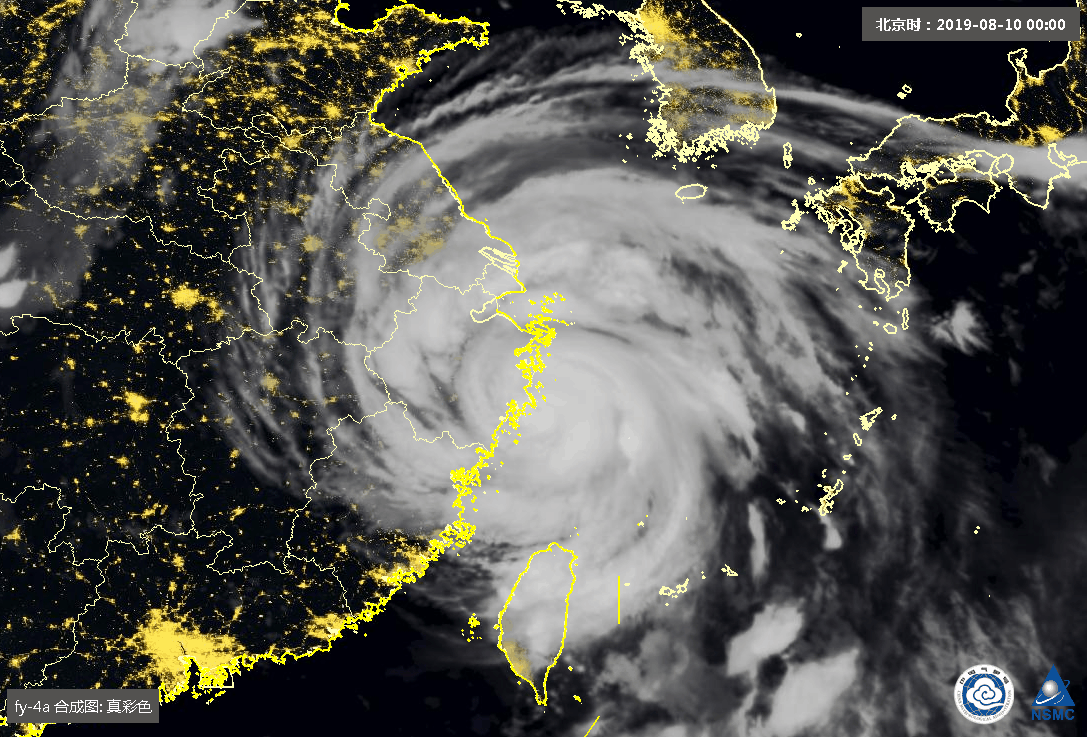
Monitoring animation captured by the FY-4A satellite from midnight to 09:00 a.m. on August 10 (BJT)./ Animation: China Meteorological Administration
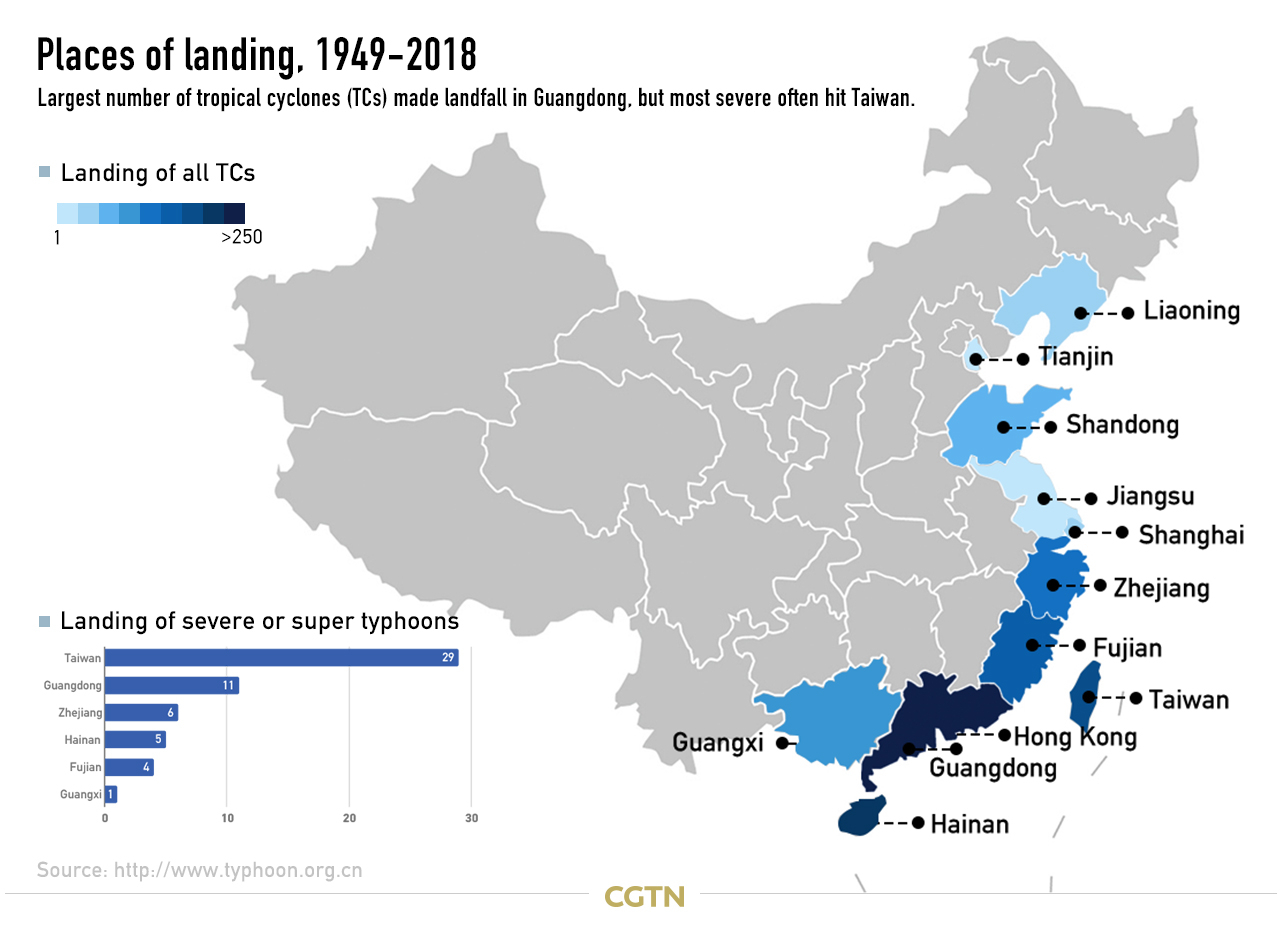
CGTN infographic
Over a million people relocated
More than one million people in east China were relocated before Typhoon Lekima's landfall early Saturday.
As of Saturday morning, 253,000 people in Shanghai were relocated with part of the city's rail transit services, including the Maglev train temporarily suspended.
The typhoon knocked over nearly 3,000 trees and caused faults on 100 power lines, of which 80 have been restored so far.
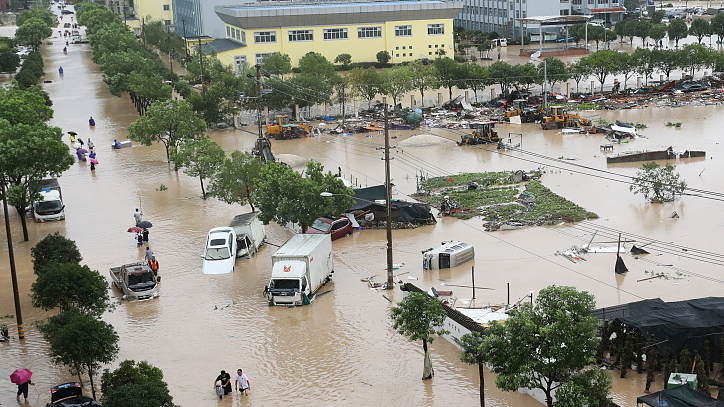
Dajing County in Leqing City, east China's Zhejiang Province, is submerged after super typhoon Lekima makes landfall, August 10, 2019. /VCG Photo
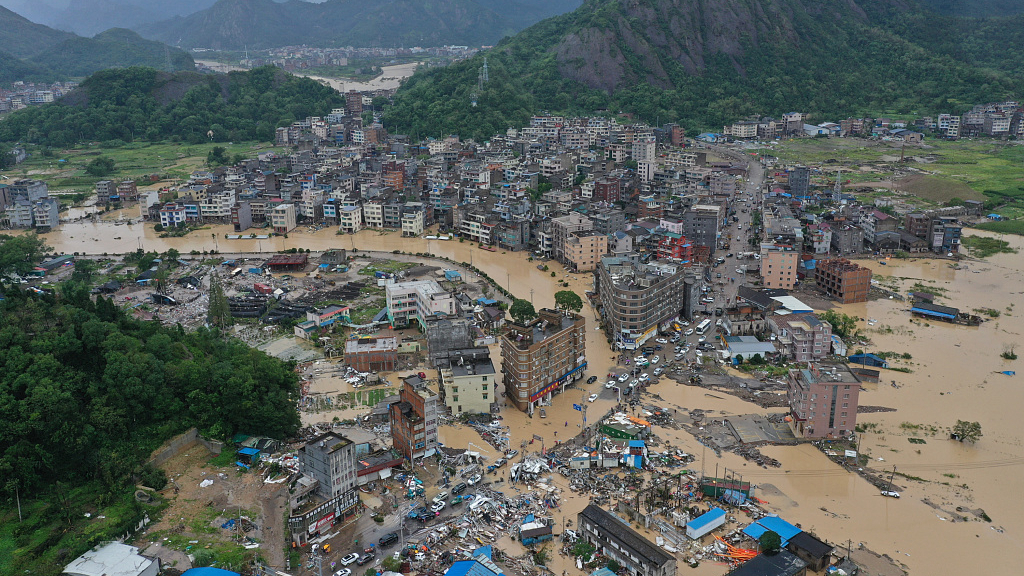
Dajing County in floodwaters, August 10, 2019. /VCG Photo
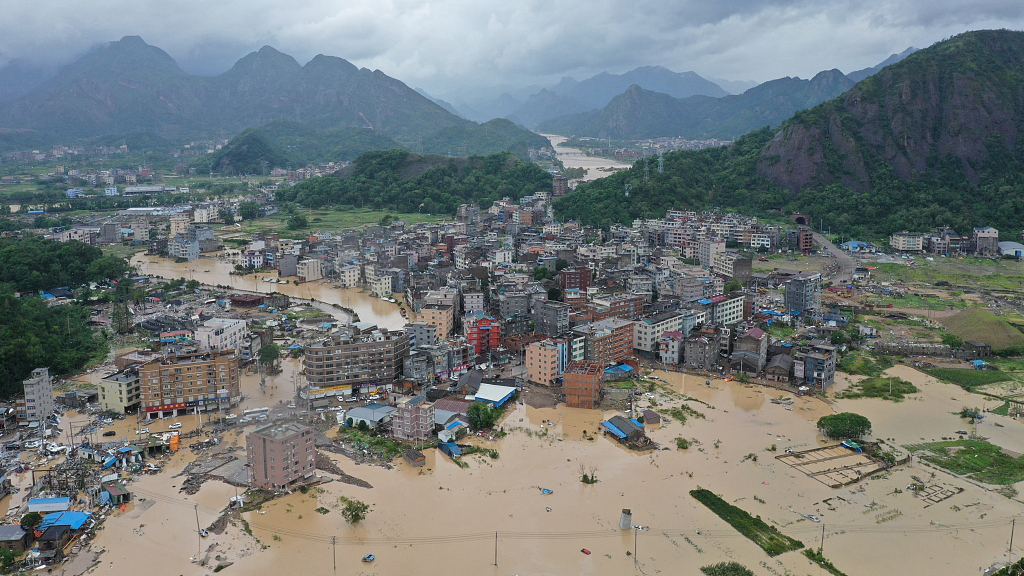
Dajing County, August 10, 2019. /VCG Photo
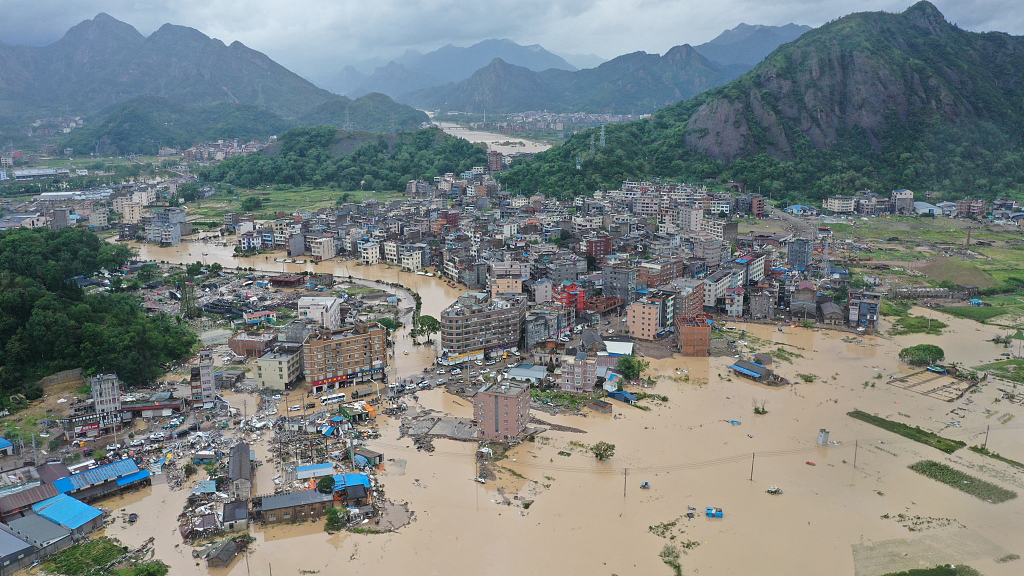
Submerged Dajing County, August 10, 2019. /VCG Photo
Transportation, recreational services disrupted
As the result of the super typhoon, thousands of flights and train services have been canceled in most parts of east China since Friday.
China's mobile car-hailing platform Didi Chuxing also suspended parts of its service in the typhoon-affected regions in eastern China on Saturday for safety concerns, the company announced.
Several scenic spots, including the Shanghai Disney Resort and Mount Tai in Shandong Province, were also closed on Saturday as Lekima brought a heavy downpour in east China.
A nationwide yellow alert for rainstorms has been issued by China's national weather observatory as heavy rains will sweep most parts of China from Friday to Saturday morning.
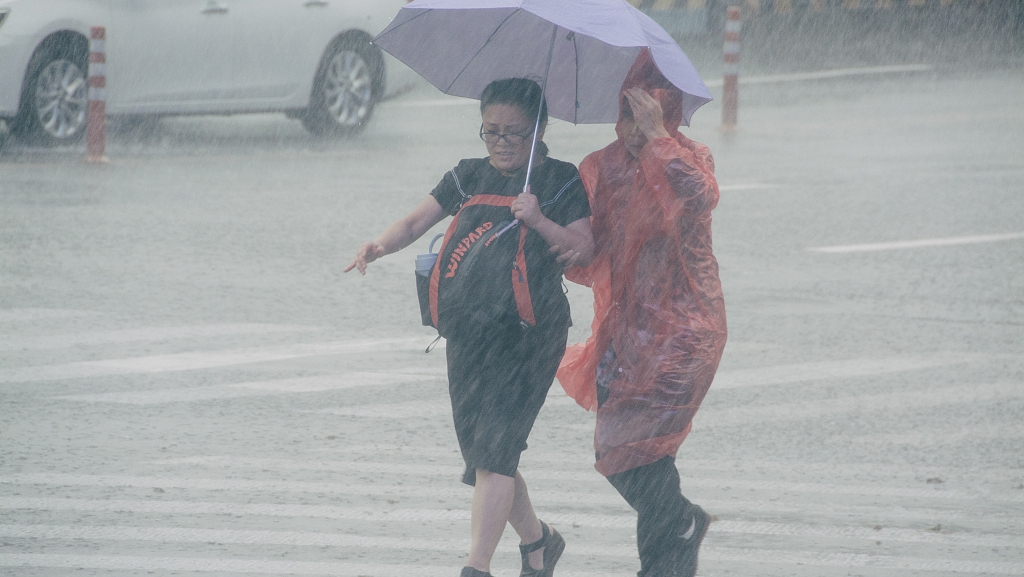
Heavy rain hits Shanghai after super typhoon Lekima makes landfall in Zhejiang Province, August 10, 2019. /VCG Photo
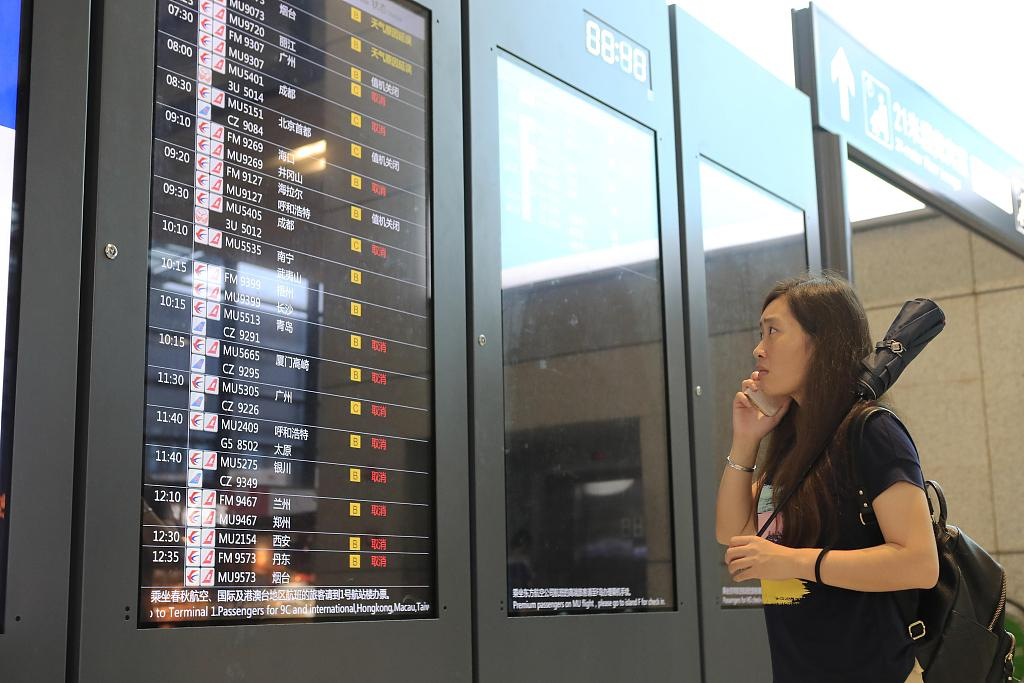
Thousands of flights are canceled at Shanghai Hongqiao International Airport due to super typhoon Lekima, August 10, 2019. /VCG Photo
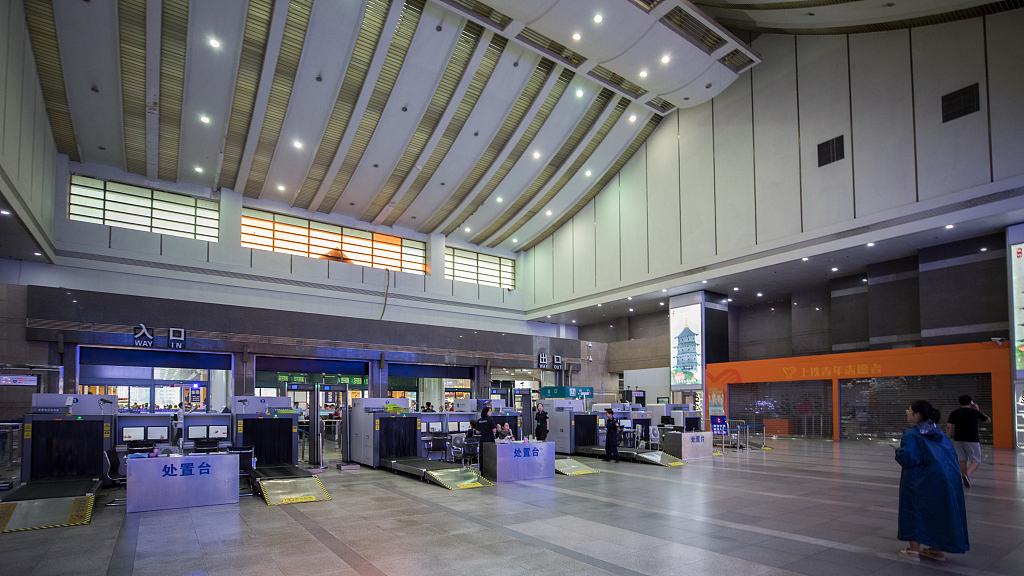
Hangzhou Train Station in east China's Zhejiang Province after super typhoon Lekima made landfall, August 10, 2019. /VCG Photo

Copyright © 2018 CGTN. Beijing ICP prepared NO.16065310-3
Copyright © 2018 CGTN. Beijing ICP prepared NO.16065310-3